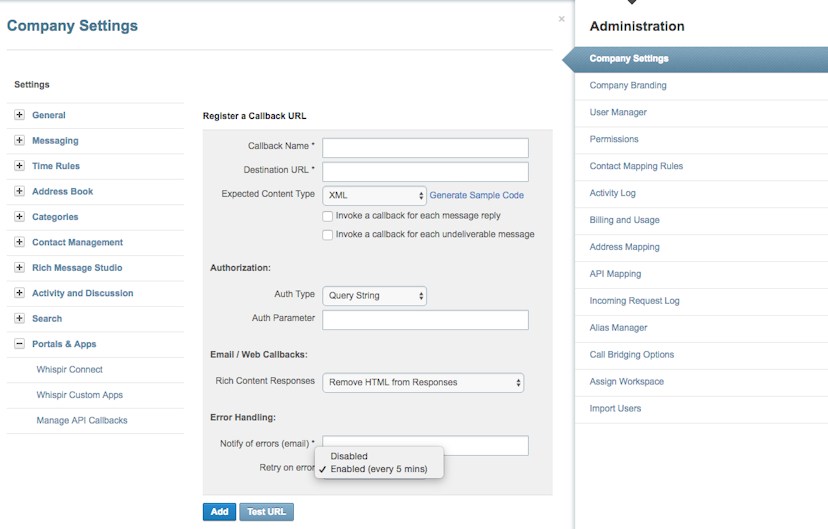The legal services industry, like many others, is rapidly pivoting to digital communications.
COVID-19 ushered in a new normal and, with it, a need for service-based industries to digitally transform. Services and clients alike are all online. With direct access in the palm of everyone’s hand, digital messaging is the primary channel we interact with one another.
Almost 90% of consumers do some form of online research before paying for a product or service, including legal services and advice. It is becoming increasingly apparent that the modern prospect is not a single target persona but a varying landscape of channel preferences and generational consumer behavior.
In turn, this has opened up new connection possibilities between law firms and clients alike.
Digital profile of modern prospects
The growth of digital communications means legal professionals need to understand how different channels are related to different audiences. For instance, the generational divide proves that mastering one specific channel only guarantees a connection with one particular group.
The generational preference split
Baby boomers have embraced digital, with 68% accessing Facebook regularly in the US alone. However, they still very much champion phone and voice communications.
Gen X was the first generation to assimilate their lives with digital technology and are still very much the advocate for email as their primary source of digital communication.
Millennials, once the trailblazers of social media and the generation who turned the noun Google into a transitive verb (“Just google it and find out”) are becoming more sophisticated with how they use the digital space in communicating their problems.
And now, Gen Z has begun to enter the workforce. They’re increasingly in need of legal consultation for uncertainties such as work cover disputes, car insurance claims and more. They have taken the mantle as the new leaders in innovative online consumer behavior.
Consumers are increasingly prioritizing digital communications platforms and assimilating new technologies into their daily lives. This includes using verbal search via voice bots such as Siri and Alexa, innovative uses for SMS and email, and emerging marketing prospects in video channels.
Additionally, legacy technology such as SMS and email is evolving to take on new roles; such as interlinking basic messaging into broader messages, using embedded URLs that lead to personalized web pages, forms, and other interactive content to make communication more efficient and effective.
The pitfalls of avoiding digital transformation
The rise of digital communication channels and the level of choice, time-saving efficiency as well as interactivity has altered the mindset of the modern client to where they value their journey and communication preferences differently.
These values tie in directly with the concept of Net Promoter Score (NPS), a metric designed to measure client satisfaction and provide insights into potential problem areas. NPS is proving to be a key indicator of business growth where customer satisfaction is directly correlated with new and returning business.
To determine each organization’s NPS, requesting feedback from clientele in the form of surveys and questionnaires and converting the data into a percentage. Companies such as Amazon and Apple have an NPS of 62 and 76 respectively, suggesting an above-average customer satisfaction rating. The legal industry as a whole currently stands at around 25. This sheds light on an alarming situation, yet also presents an opportunity.
A major reason for such a low NPS is the fact that legal firms of all sizes don’t see the value in increasing their scores, Yelp or Google reviews and fail to engage clients with feedback opportunities along their journeys.
Review and feedback: The fuel to grow
As in any discovery process, prospects will seek to vet and establish services when searching for a legal solution to their problem. In the marketing world, this is known as the awareness phase of the buyer’s journey.
Where a prospect will move from becoming aware of their problem, consider potential solutions, intend on a selected preference, convert into a client by signing and advocate your services as a loyal on-going client.

A survey of nearly 2,000 lawyers in the US discovered around 37% don’t request client feedback at all. The 42% that do collect feedback only do so casually, and courtesy biases suggest they likely receive only the type of positive feedback they want to hear.
In the digital marketplace, legal services must promote and maintain a presence online to attract prospects particularly during the consideration and intent phases of their journey. This is where feedback and high NPS ratings become the currency of attraction.
Simply put, satisfied clients who become advocates for your firm boost your NPS and provide feedback reviews that act to lure new prospects at the top of your lead generation funnel.
The multi-channel digital solution
This is where Whispir comes in.
We help our customers adopt automated communications that save time and resources, as well as facilitating growth.
Our multi-channel communications platform empowers legal professionals to easily connect and engage customers with our all-in-one solution. Foster relationships to earn advocacy and gain higher NPS to attract new prospects who are yet to be aware of your services.
The Whispir tactic for NPS
Establishing an NPS strategy is simple. Using interactive feedback surveys legal professionals can promote clients to review their overall experience. The more reviews gathered, the more accurate the average response becomes and the better the insight for improvement appears.
An NPS survey consists of a single question that measures the likelihood of your customers referring your business to their others. It is an indicator of customer experience, customer satisfaction, and brand loyalty. The responses to the NPS survey are used to generate a score ranging from -100 to 100. NPS score is used to classify customers and help businesses improve their experience.
Your survey consists of one simple question measured on a scale from zero to ten.
Q: Considering your complete experience with our company, how likely would you be to recommend us to a friend or colleague?
It is critical for engagement that the less time clients spend on answering surveys the higher the chances they will engage are.
Whispir helps legal professionals:
-
With a single platform to manage all communications.
-
Easily build automation/workflows with personalized messages and responses, to engage clients and prospects and propel them along the buyer’s journey.
-
Maximizes revenue by sending scheduled reminders to clients and prospects to attend their appointment or utilize a promotion.
-
Build interactive NPS feedback forms to gauge client satisfaction.
Send out automated reminders for appointments and consultations, collect approval in real-time for action points within your processes, and establish a constant connection to nurture and retain clients.
To find out more about the Whispir platform, download your free ebook for legal professionals here.











